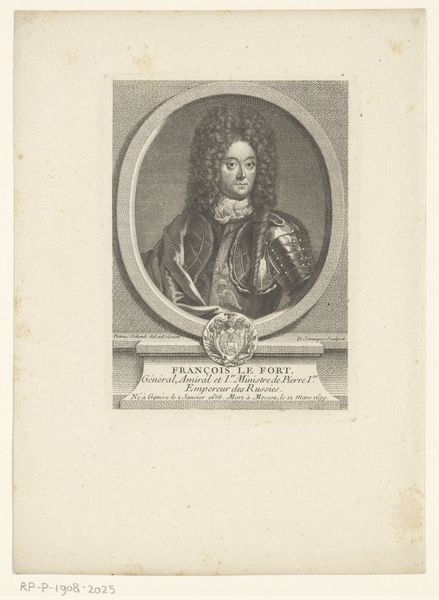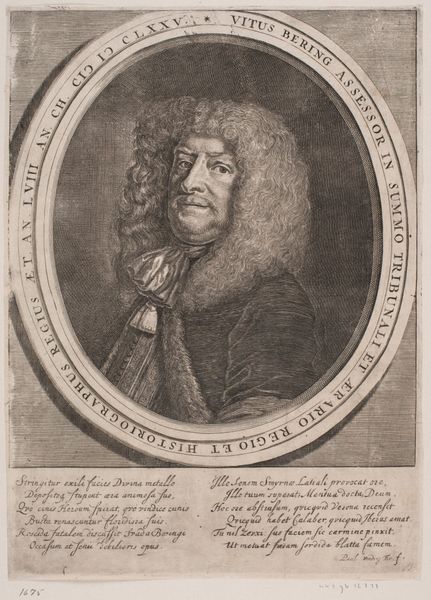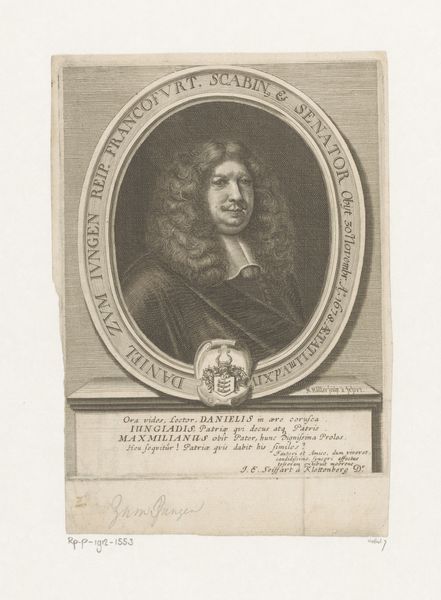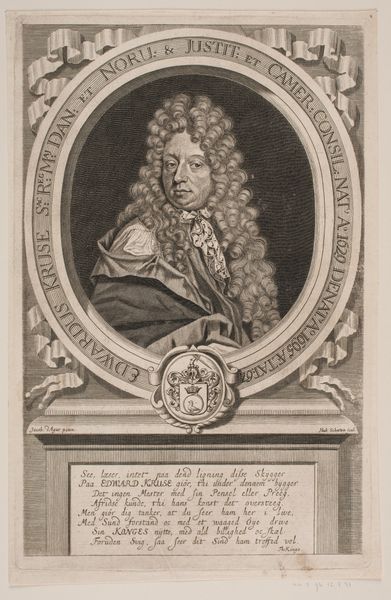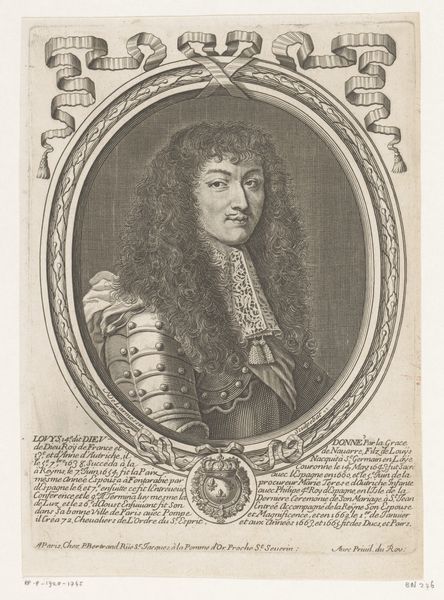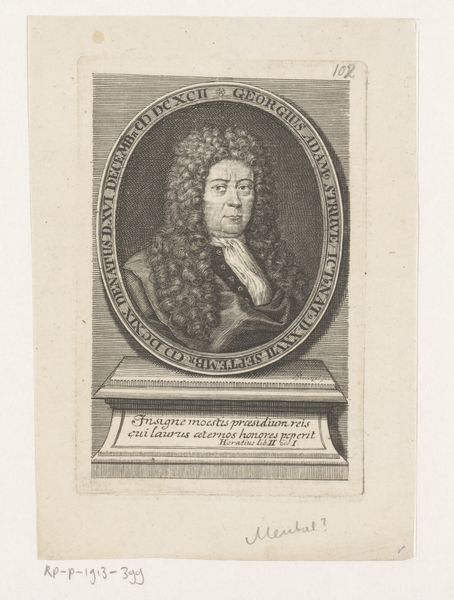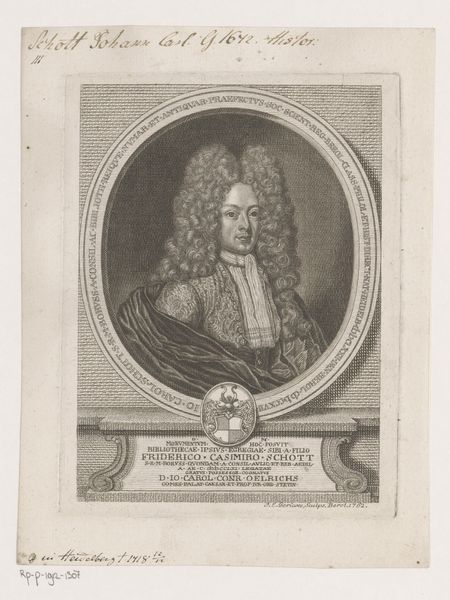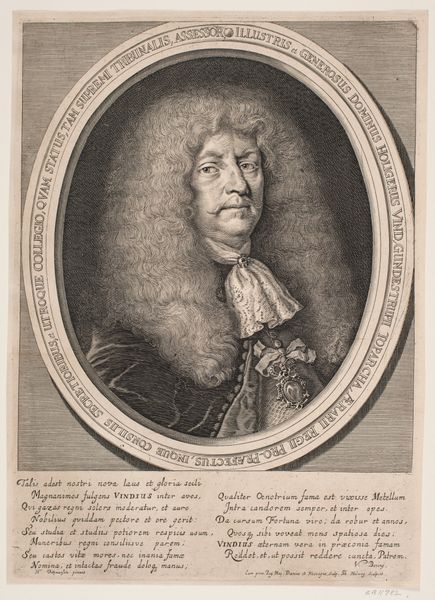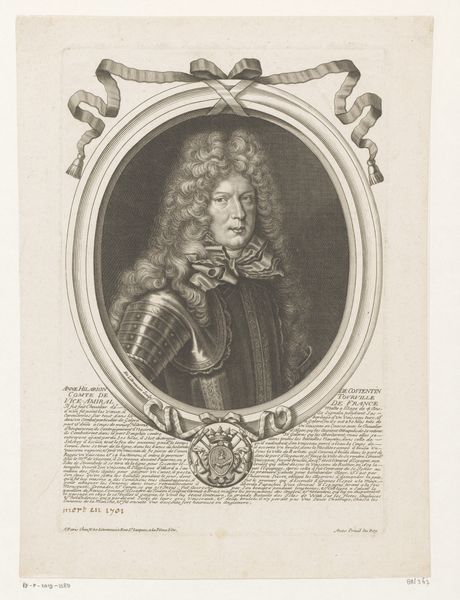
print, engraving
#
portrait
#
baroque
# print
#
old engraving style
#
personal sketchbook
#
history-painting
#
engraving
Dimensions: height 251 mm, width 183 mm
Copyright: Rijks Museum: Open Domain
Curator: Let's explore this engraving titled "Portret van Giacomo Lesle, graaf van Neustadt," dating back to the late 17th century. The artist is Louis Gomier. Editor: My first thought? This portrait exudes power. The man's confident gaze, coupled with the ornate frame, suggests someone of significant standing in his era. There is a gravity to it, don't you think? Curator: Absolutely. Giacomo Lesle was, as the inscription states, the Count of Neustadt, and held prominent positions within the Austrian region of Styria. This engraving reflects the visual language of Baroque-era power—a calculated presentation intended for broad circulation. Consider the institutions he represents through his persona and title. Editor: The symbols embedded in this image must resonate with concepts of leadership, history, and military might. It’s more than just a portrait; it’s a symbolic declaration of status. Curator: Precisely. The armor signifies his military role as “Resciallo Generale," a high-ranking military official, and the framing ribbons lend it an air of ceremonial importance suitable for history painting as well as for the tradition of rendering commemorative objects. It also appears as a bookplate of sorts. Editor: Look at the subtle ways Gomier contrasts Lesle’s face with the metal. It feels intended to balance his physical being with the idea of authority made permanent. It's a brilliant demonstration of Gomier’s intention as more than a mere recorder of a man’s face. He’s cementing a legacy with these signs. Curator: Which circles back to the crucial role engravings played in disseminating information and reinforcing social hierarchies. This print would have been relatively accessible, influencing perceptions of Lesle across a wide audience within a society reliant on such symbolic representations. Editor: It truly does function on multiple levels, as both a personal commemoration and a calculated projection of power to those familiar with its associated heraldry. Seeing the past through symbols truly highlights cultural legacies. Curator: By analyzing it, we better understand the visual strategies employed to build and maintain authority during the Baroque period and the role art played in it.
Comments
No comments
Be the first to comment and join the conversation on the ultimate creative platform.

